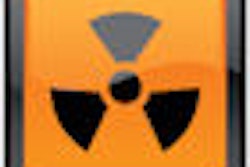Monday, November 30 | 3:30 p.m.-3:40 p.m. | SSE22-04 | Room S403B
South Korea has a nationwide accreditation system for medical imaging, including CT scanners. However, the number of scanners and CT scans are increasing rapidly, similar to the conclusions of recent U.S. reports.Dr. Seung Eun Jung and colleagues from the Catholic University in Seoul sampled almost 13% (200/1,567) of the country's CT scanners, directly measuring CT dose index (CTDI) on a phantom, and recording scanning parameters at institutions for head, chest, and abdomen CT, calculating effective doses using automated software.
"We compared international guidelines for our results and developed a diagnostic reference level for CT examinations," Jung told AuntMinnie.com.
Based on the survey results, they proposed CT diagnostic reference dose levels for the head (60 mGy), as well as the abdomen and chest.
The survey established the PREDICT (Patient Radiation Exposure and Dose in CT) database as a sustainable resource in South Korea for monitoring dose trends in CT. "Our study suggests that quality of scanner and education for imaging protocols is essential for reducing radiation exposure," she said.



















